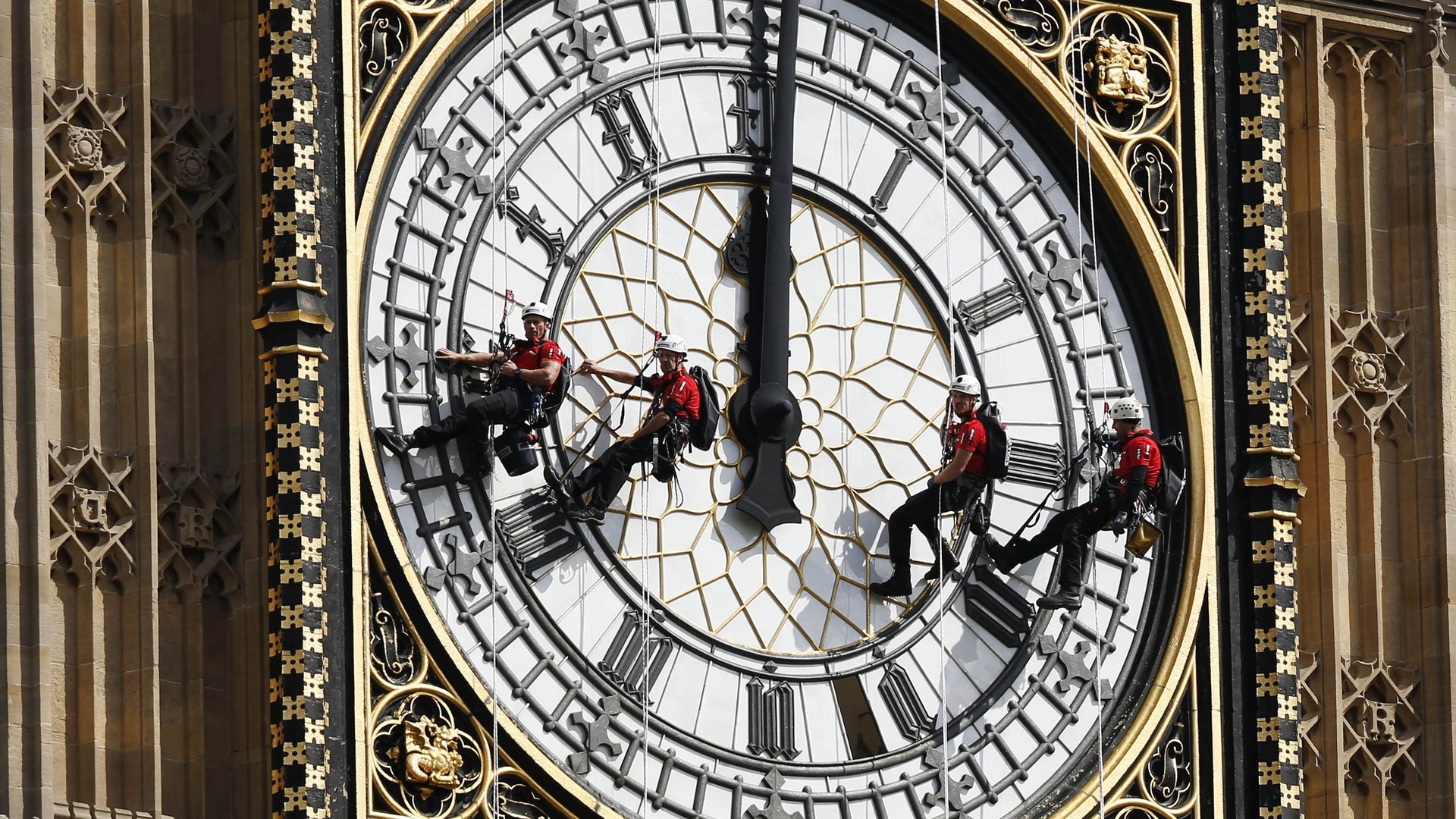Brexit’s next casualty could be clear time zones
The UK enters British Summer Time (BST) on Sunday (March 29) at 1am, with clocks moving forward one hour. It’ll mean less time in bed that night for millions of Brits, but longer evening daylight hours through the summer until the clocks get rolled back again in October.


The UK enters British Summer Time (BST) on Sunday (March 29) at 1am, with clocks moving forward one hour. It’ll mean less time in bed that night for millions of Brits, but longer evening daylight hours through the summer until the clocks get rolled back again in October.
It’s an annual event, but this year’s changes might be the last before things start to get really complicated. That’s because the European Parliament last year voted heavily in favor of ending Daylight Saving Time, meaning the bloc will no longer change the clocks twice a year starting in 2021. Each member state will get to decide whether to set their clocks to permanent summer or winter time.
The UK would have had to go along with all that, had it not left the EU in January. Now it’s up to British officials to choose whether to maintain Daylight Saving Time. Brits appear to be more divided than their European counterparts, and officials have in the past suggested they don’t want to follow the EU’s lead.
Should the UK keep the practice of moving the clocks forward in spring and back again in fall, it could be a headache for the island of Ireland in particular. The Republic of Ireland is an EU member state, whereas Northern Ireland is part of the UK. A divergence will confuse not only businesses that operate across the two, but the tens of thousands of people who move between them every day.
Historically, the practice of changing the clocks began on a national level in Germany during World War I, to conserve energy during wartime. In the UK, the idea had been championed years earlier by builder William Willett—a great-great-grandfather of Coldplay’s Chris Martin—perhaps in part to have more time to play golf before the sun set each day during the warmer months. (He would die before the UK followed Germany’s lead a month later.)
Daylight Saving Time has long been popular in Scotland—because the sun rises later in winter the further north you go—and among construction workers, farmers, and others across the UK who depend on sunlight to do their jobs in the early morning hours. But it remains unpopular with those who want to avoid losing out on some sleep during spring as their bodies adjust to the new schedules, and those who want earlier summer evenings (and don’t care much for golf).
The UK government launched an inquiry into the matter in July 2019, publishing its findings (pdf) in February. It recommended against a full public consultation, at least until there’s more clarity on what the EU and its member states go for. Like Brexit itself, if Daylight Saving Time is scrapped across the bloc, the issue of Ireland’s border—in this case a time zone one—might once again loom large in what Britain decides to do next.